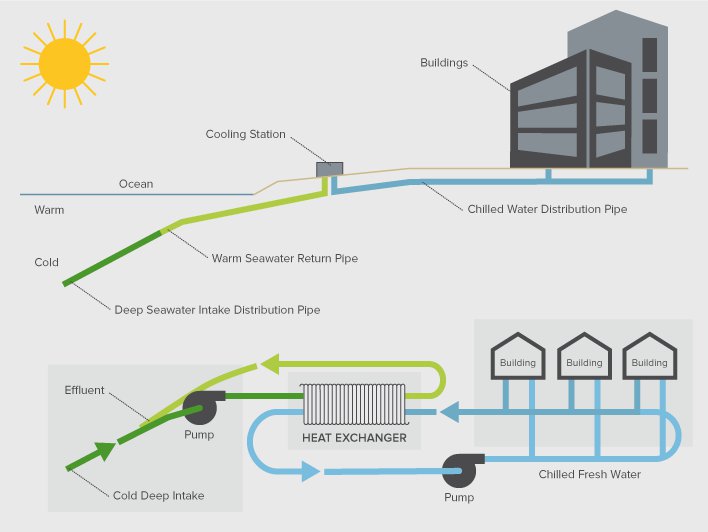
District cooling is the provision of space cooling needs through the distribution of cold water through a distribution grid to individual buildings. Cold is generated at a single or multiple central locations and can be delivered directly into the building, or through heat exchangers at the building. The centralised production of cold at a large-scale, perhaps in a number of different locations in the network to reduce distribution losses, allows the design of highly efficient systems using the latest cooling technologies. The distribution network for district cooling is essentially the same as for a district heating network, and indeed some studies have looked at the feasibility of using district heating networks in summer as cooling networks. Significant energy is required for pumping, around 1% of the cooling energy supplied may be typical, but given district cooling systems tend to be small a lower value may be achievable. At the same time, distribution losses can be significant. However, in temperate climates, if insulated pipes can be buried, ground temperatures won’t be significantly different from the supply distribution temperature. However, where it is too expensive to underground much of the network, or in hot climates, losses can be more significant and may be in the order of 2-10%.
In a district cooling system cold production can be from multiple sources, including: